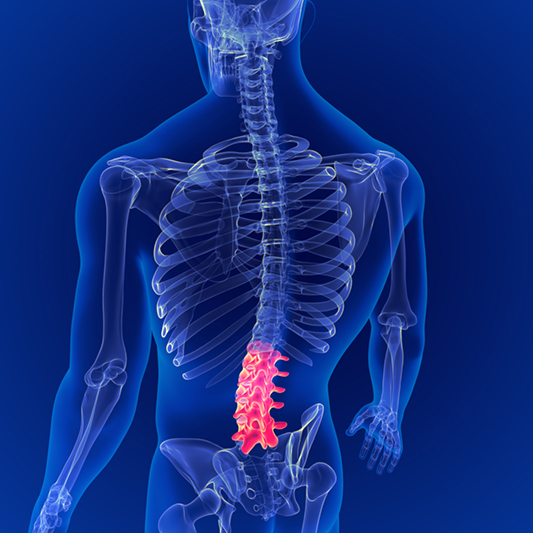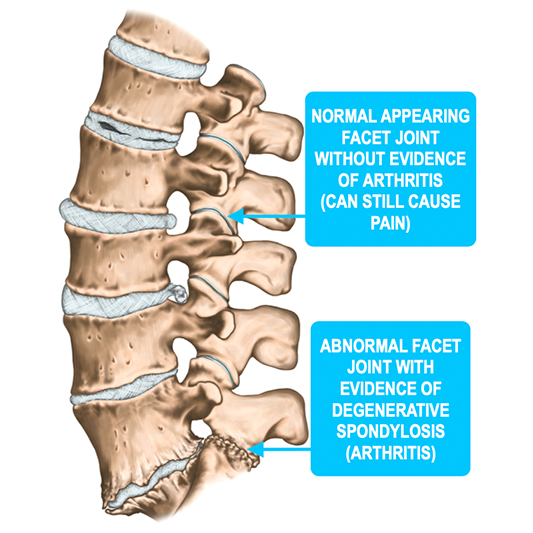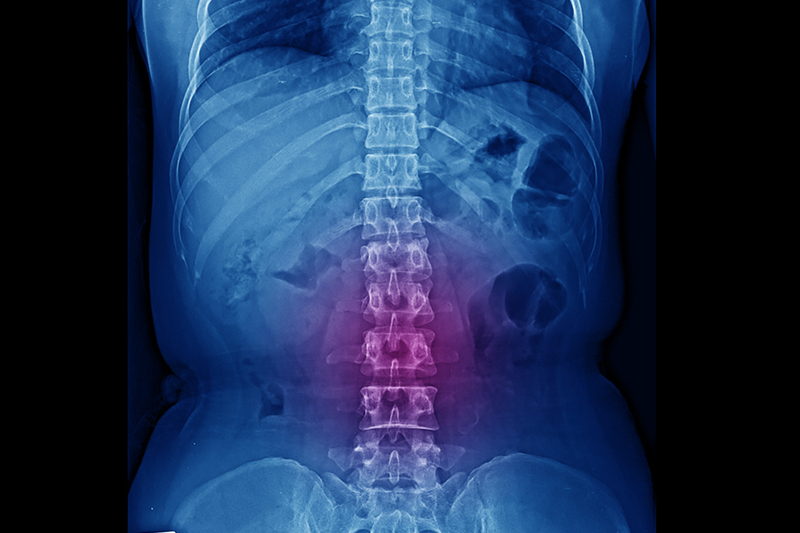Lumbar Facet Syndrome (Spondylosis, Facet Arthropathy/Arthritis, Spondylitis, Facet Sprain)

The human spine is made up of vertebrae (bones) that are stacked on top of each other. Each segment is connected in the front by an intervertebral disc and in the back by small facet joints. Damage, irritation, or degeneration of these small facet joints can lead to significant impairments. The painful conditions caused by abnormal function of the facet joints are referred to as facet syndrome.
Causes of Lumbar Facet Syndrome
As people age, the facet joints and discs wear out and degenerate, causing changes that interfere with the normal structure and function of the spine. Spine degeneration is a common aging process, and spinal arthritis may not cause major problems. That being said, some people experience severe low back pain from arthritic facet joints. This painful degenerative spinal condition is referred to as spondylosis, facet disease or facet pain.

Facet syndrome can affect the cervical spine (neck), thoracic spine (upper and middle back), or lumbar spine (lower back). As the discs separating vertebrae shrink (with age or trauma), it places greater forces on the facet joints in the back of the spine causing the bones to rub against each other during spinal movement. This contributes to the changes in the structure and function of the joints.
The facet joints can also cause significant pain without any evidence of degeneration. Often times this is due to inflammation of the facet joint (spondylitis) or a facet joint sprain caused by trauma to joint due to rapid movements of the spine that can occur in accidents or sports injuries.

In cases of trauma, the sudden movement from, for example, a car accident or football tackle can cause the joints to smash against one another. These injuries lead to damage and swelling of the facet joints that is often not detected even on advanced imaging.
Symptoms of Lumbar Facet Syndrome
- Low back pain
- Stiffness in the lower back
- Pain with leaning back/twisting motions
- Pain with standing for long periods
- Pain that radiates to the back of the thighs or buttocks
- Pain with getting up from a seated position
Diagnosis and Treatment
The doctor will start by taking a detailed history and performing a thorough physical exam of the spine. Various diagnostic testing such as X-ray, MRI, or CT scans may be utilized to gain a better understanding of the location and severity of the problem. Often times, a diagnostic block (injection) will be recommended which will often confirm the diagnosis. The doctor will also rule out other conditions such as SI Joint Pain or Coccydynia that can produce similar symptoms.

Treatment for facet syndrome often starts with conservative measures such as therapy, a home exercise program, and/or anti-inflammatory medications. If these treatments fail, non-operative therapies such as facet joint blocks/injections, regenerative medicine techniques, and Radiofrequency Ablation may be recommended.
At Orthopedic Pain Institute, we will develop a highly specialized plan to treat your individualized needs. Schedule your consultation today to learn more about lumbar facet syndrome, facet pain, and spondylosis and how we can help you get back to what you love!


